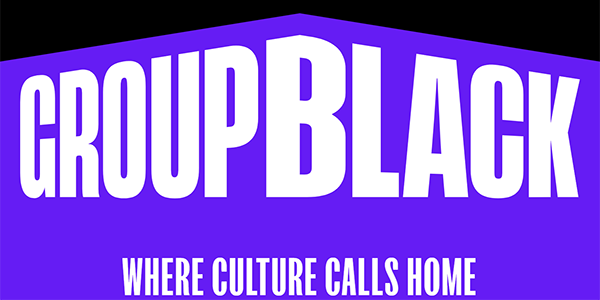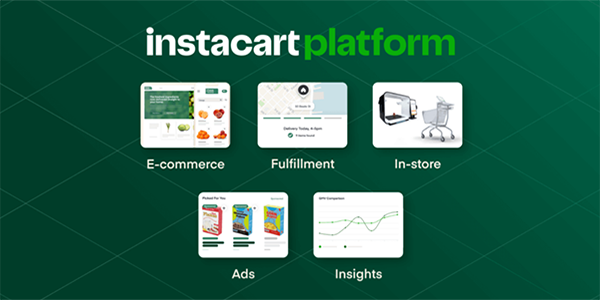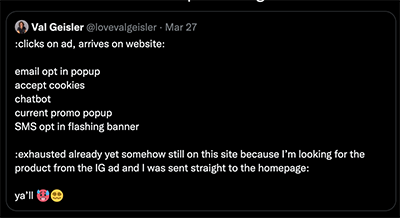 |
|||||||||||||||
|
|||||||||||||||
| P&G Bets Big On (Group) Black |
 |
| Group Black is making major strides and leaping closer to its goal of deploying $500 million in Black-owned media by the end of this year. After securing $75 million from GroupM upon their debut, Group Black’s latest pledge from Procter & Gamble is a nine-figure sum, their single largest investment to date. Launched publicly in June 2021, Group Black’s mission is to “dramatically transform the face of media ownership and investment” by assembling independent Black publishers into a collective of scalable media opportunities that meet the advertisers’ needs. The P&G partnership kicked off this month at SXSW featuring Charmin and Bounty brands. However, the deal will span multiple years and mediums including linear, OTT, digital audio, and print channels. Black-owned media and actionable brands are hopping on the Group Black bandwagon like it's the only ride in town. An investment in group black makes the lack of available inventory a non-issue, allowing advertisers like P&G to equally align its goal of being the number one brand for Black consumers in every category with its ad spending levels. |
| Investing in Black-owned media was typically met with hesitancy, that was until the social unrest that erupted after the treacherous murders of George Floyd, Breonna Taylor, Ahmaud Arbery, and countless others. Brands like P&G, Target, Coca Cola, General Motors, Verizon, and a host of agencies sprang into action ready to commit a serious chunk of their annual budget to this space. These pledges allowed large Black media owners to reap the majority of the benefits, hitting record-breaking thresholds while smaller independent publishers remained stagnant due to their lack of scale. Group Black’s initiative is providing more seats at the table and a piece of the revenue pie for everyone. But the new flood of revenue opportunity is met with some skepticism as independent Black publishers are unsure if the dollars will be funneled as a long-term investment or a short trial period. As Black-owned media owners continue to vie for a permanent spot on media plans (separate from minority and Black-targeted budgets), diversity will be just as important for mainstream publishers in their offerings. From integrated campaigns to custom content, a diversified approach will be critical to closing the gap. But don't just take it from us, learn more from AdMonsters alum and Group Black’s new President of Advertising, Kerel Cooper, in his upcoming AdMonsters Ops Keynote on June 7, 2022: Diversified Teams, Tactics & Audiences: Why the Future of Media Looks Like Group Black. . |
 |
| Profit on Priorities | ||
| In their latest report on digital publishing, the Association of Online Publishers reviewed how publishers – those targeting B2B, consumer, or a combination of both – are prioritizing challenges and opportunities within their businesses. Across all types of publishers, the highest priority is on developing new revenue streams through product innovation, with the need to ensure data privacy compliance and transparency coming in a close second. When the same publishers were asked where they saw the most potential for revenue growth over the next three years, subscriptions and lead generation revenues were the top two tactics (with 55% and 33% respectively), suggesting that publishers are very focused on building direct relationships with their users and leveraging their first-party data. |
||
| For publishers looking to diversify their revenue streams, turning to their data assets to develop new audience-based data products can be a solid option. Agencies are looking for innovative ways to integrate first-party data into their buying strategies, including employing media buys or curated deals enriched with publisher data. By shifting to more direct buying models via increased adoption of deals and other private trading paths, publishers can control access to their proprietary data assets – which will be critical for securing the longevity of this diversified revenue stream. Publishers need to ensure that they are working with the right partners for transparency, secure data usage, and direct trading relationships. The MediaGrid is a next-generation SSP developed by IPONWEB, built from the ground up to give publishers tools to enrich their inventory with unique first-party data assets and supercharge their data strategies. Publishers can get closer to advertisers to form long-lasting relationships to satisfy advertiser buying goals while maximizing audience yield. By connecting to The MediaGrid, publishers can extend the value of their data to create data-enriched packages to be activated on any DSP – and do it all without ever giving up control of their data. |
||
|
||
| EU's DMA Is Busting Open Big Tech |

Image sourced from
|
| Coming in October, the EU will back up all their talk with big action in the form of the Digital Markets Act (DMA) against big tech companies with core platform services. Under DMA, each tech giant will have to make their messaging services interoperable and give business users access to their data. In essence, iMessage users would be able to chat with FB Messenger users. Goodbye, encryption services! Yet, the law is said to allow businesses to be able to promote competitive products and services on a platform while closing deals offline. These parameters will apply to companies with a market capitalization of 75 billion euros, $7.5 billion euros in annual turnaround and a minimum of 45 million monthly users. Tech giants who are in violation of the DMA will be fined up to 10% of their company’s annual global turnover. Repeat offenses could face up to 20% and even an acquisition ban. |
| No one is happier to see this come to fruition than EU antitrust chief Margrethe Vestager. Vestager proposed the DMA a year ago, which is a list of dos and don'ts specifically aimed at Amazon, Apple, Meta, Google, and Microsoft. If all goes according to plan, the DMA could provide an answer to the many complaints coming from various tech alternatives who believe their platforms are positioned to lose against the tech behemoths. Sweden’s Spotify says Apple’s app store fees are only beneficial for Apple's own Music service Swiss email provider ProtonMail isn't even on consumer's radar since the Android and iPhone platforms default to their company's email apps German cloud provider NextCloud has labeled Microsoft’s OneDrive storage service as anticompetitive. Once DMA goes into effect, European consumers will have more options to choose from than just big tech's wares. But like any regulation that comes along, the DMA has its critics. German messaging app Threema is not on board, believing the DMA might cannibalize its pay structure by allowing users to message across free group chats like WhatsApp. Although this new set of rules is positioned for the greater good of the consumer, it is still unclear how the market will actually respond. In the meantime, the tech ‘gatekeepers’ will have only six months to comply. |
| Instacart Platform Cashes In on First-Party Data |

Image sourced from
|
| Since the dawn of the pandemic, consumers continue to choose the convenience of online shopping vs shopping in-store. Riding on that wave, Instacart is expanding its services with Instacart Platform. This new initiative will feature a range of digital services that are said to benefit both the shopper and retailer including fulfillment, insights, and advertising options. Instacart Platform is comprised of three distinct sections: - Carrot Ads: allows retailers to serve ads and/or sponsored search placement - Carrot Warehouses: a more flexible, local fulfillment service that will offer 15-minute deliveries to shoppers - Carrot Insights: giving retailers a better understanding of buying trends Carrot Ads leverages a revenue-sharing model as an additional source of profit for retailers and Instacart. The platform is being tested with Schnuck Markets, Good Food Holdings, Plum Markets, and other small to mid-sized grocery retailers. |
| As we mentioned last week, retail media shows no signs of slowing down. According to eMarketer, Amazon is the dominant player in the space but Walmart and Instacart are the ones to watch this year and Instacart Platform may be the first step to solidifying Instacart's position. Instacart Platform is a real-life example of how to leverage first-party data in the cookieless world. Each of the three components could allow brands to advertise smarter and in real-time along the consumer journey, in return for an additional fee. This dynamic advertising model is one that publishers can take advantage of too. With the power of contextual relevance and expertise in audience behavior, publishers are in a position to influence the consumer journey beyond display ads. Implementation may not be so easy, but if a strategy is put in place before third-party cookies become a figment of our imaginations, it could reap a major payoff in the long run. |
 |
||||||||
|
||||||||
 |
||||||||
 |
||||||||
|
| @{optoutfooterhtml}@ |








